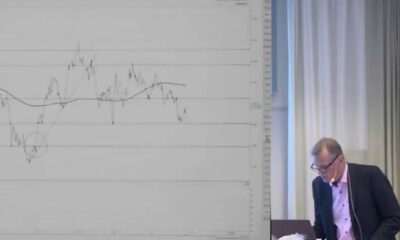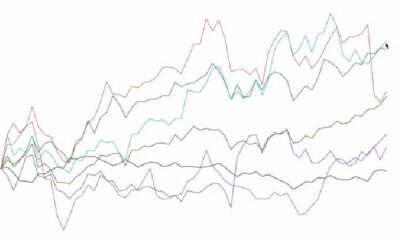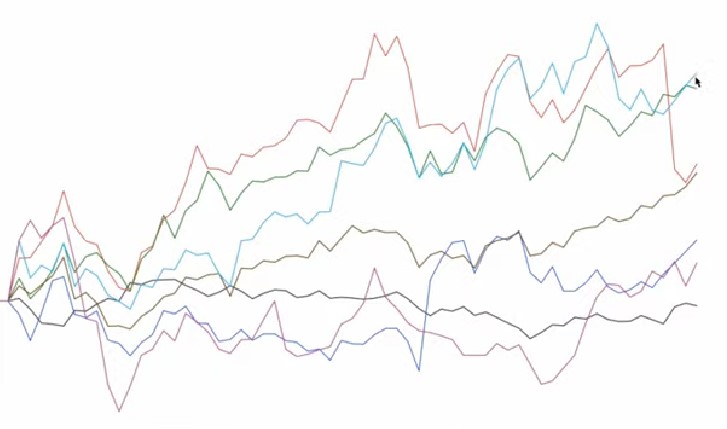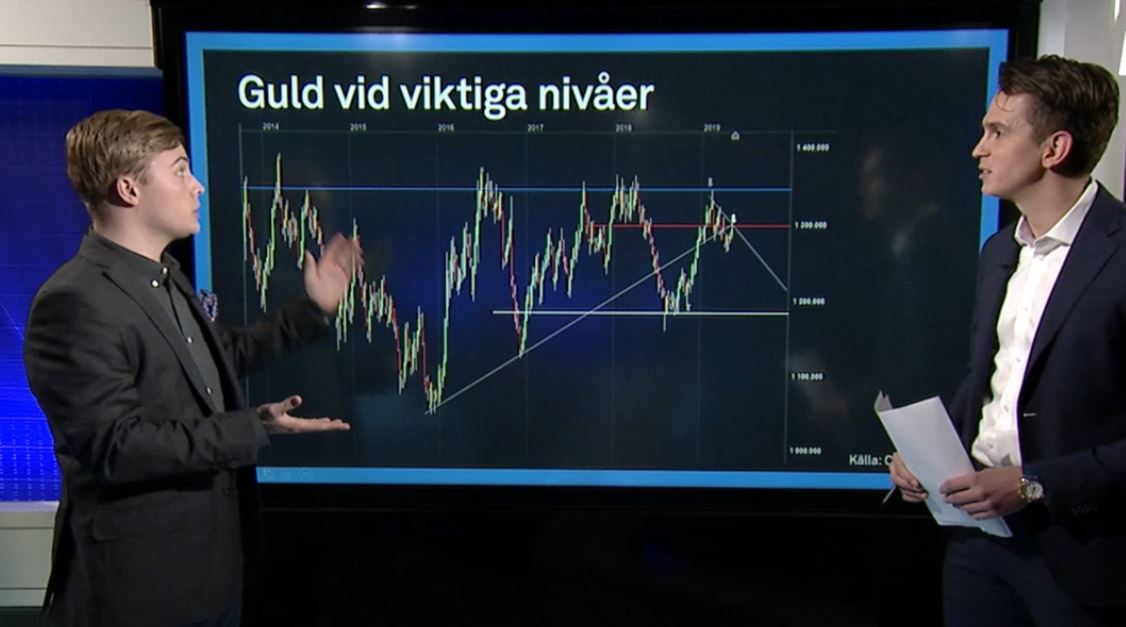Analys från DailyFX
GBP/USD Technical Analysis: Rate Cut Waiting for August, Let it Rip for Now
To receive James Stanley’s Analysis directly via email, please sign up here.
Talking Points:
- GBP/USD Technical Strategy: Downtrend seeing retracement after a ‘no-move’ from the Bank of England at most recent rate decision.
- GBP/USD is still bearish with price action subdued below the ‘Brexit-close.’
- SSI – If you’re looking for trading ideas, check out our Trading Guides. And if you want something more short-term in nature, check out our SSI indicator. If you’re looking at opening a trading account, FXCM has a contest at the beginning of next month for certain account holders. Click here for full details.
In our last article, we looked at the extension in the down-trend in the British Pound as traders began to factor-in a higher probability of a rate cut from the Bank of England in the coming months. And this wasn’t an unfounded expectation, as the head of the BOE has even told markets that a rate cut could be in the cards this summer in order to proactively offset risks emanating from Brexit.
The odd part about price action around this theme is that until Mr. Carney began talking up a rate cut on the Wednesday following the Brexit referendum, Sterling had begun to recover it’s post-Brexit losses. But as soon as Mark Carney began talking up the prospect of a rate cut, that down-trend in GBP came right back-in to markets and GBP/USD sank to fresh +30-year lows; even penetrating the vaulted 1.3000 psychological level on the pair. We had discussed the prospect of rate cuts from the Bank of England in last week’s Fundamental Forecast; and given that August brings another Super Thursday in which the bank will also release inflation projections, it made sense that the bank may wait to make a move on rates.
But this doesn’t necessarily spell for a bullish backdrop in the Pound. If anything, its just slightly ‘less bearish’ in the near-term as price action has seen GBP/USD get pushed to significant new lows, and the BOE might be merely waiting to cut rates so that they can accompany that move with relevant data to indicate that they’re actually cutting due to data rather than just fears of what the data may bring.
If we combine this with the fact that the US Dollar continues to range near-resistance with little chances of a near-term rate hike out of the Federal Reserve, this means that GBP could rip-higher for a bit longer before moving back into a down-trend. And again, this isn’t necessarily a ‘bullish’ factor as much as its simply ‘less bearish’ in the near-term.
So the bullish side of the pair might not be all that attractive with a fairly-probable rate cut coming in August; and the bearish side of the pair may not be attractive until we get price action finding resistance at a more well-tested level.
On the chart below are three such zones that traders can look for that next iteration of resistance in the Cable. The 1.3500 big figure is huge for a few reasons: This was the Financial Collapse low while also being a ‘major psychological level.’ This was also the lower swing-high just before Mark Carney started talking up rate cuts. Should resistance form in the zone around 1.3500, this could be an attractive jump-off level. And if the retracement can run a bit deeper, the same 1.3834 level that we discussed a few weeks ago could become an attractive zone of resistance, as this was the prior swing-low before the Brexit price action saw the pair plummet to fresh lows. And a bit deeper than that we have the prior swing-low at the 1.4000 psychological level, and this could funtion as a third zone of potential resistance should this retracement continue.
Created with Marketscope/Trading Station II; prepared by James Stanley
— Written by James Stanley, Analyst for DailyFX.com
To receive James Stanley’s analysis directly via email, please SIGN UP HERE
Contact and follow James on Twitter: @JStanleyFX
Analys från DailyFX
EURUSD Weekly Technical Analysis: New Month, More Weakness
What’s inside:
- EURUSD broke the ‘neckline’ of a bearish ‘head-and-shoulders’ pattern, April trend-line
- Resistance in vicinity of 11825/80 likely to keep a lid on further strength
- Targeting the low to mid-11600s with more selling
Confidence is essential to successful trading, see this new guide – ’Building Confidence in Trading’.
Coming into last week we pointed out the likelihood of finally seeing a resolution of the range EURUSD had been stuck in for the past few weeks, and one of the outcomes we made note of as a possibility was for the triggering of a ’head-and-shoulders’ pattern. Indeed, we saw a break of the ’neckline’ along with a drop below the April trend-line. This led to decent selling before a minor bounce took shape during the latter part of last week.
Looking ahead to next week the euro is set up for further losses as the path of least resistance has turned lower. Looking to a capper on any further strength there is resistance in the 11825-11880 area (old support becomes new resistance). As long as the euro stays below this area a downward bias will remain firmly intact.
Looking lower towards support eyes will be on the August low at 11662 and the 2016 high of 11616, of which the latter just happens to align almost precisely with the measured move target of the ‘head-and-shoulders’ pattern (determined by subtracting the height of the pattern from the neckline).
Bottom line: Shorts look set to have the upperhand as a fresh month gets underway as long as the euro remains capped by resistance. On weakness, we’ll be watching how the euro responds to a drop into support levels.
For a longer-term outlook on EURUSD, check out the just released Q4 Forecast.
EURUSD: Daily
—Written by Paul Robinson, Market Analyst
You can receive Paul’s analysis directly via email bysigning up here.
You can follow Paul on Twitter at@PaulRobinonFX.
Analys från DailyFX
Euro Bias Mixed Heading into October, Q4’17

Why and how do we use IG Client Sentiment in trading? See our guide and real-time data.
EURUSD: Retail trader data shows 37.3% of traders are net-long with the ratio of traders short to long at 1.68 to 1. In fact, traders have remained net-short since Apr 18 when EURUSD traded near 1.07831; price has moved 9.6% higher since then. The number of traders net-long is 15.4% lower than yesterday and 16.4% higher from last week, while the number of traders net-short is 0.4% higher than yesterday and 10.5% lower from last week.
We typically take a contrarian view to crowd sentiment, and the fact traders are net-short suggests EURUSD prices may continue to rise. Positioning is more net-short than yesterday but less net-short from last week. The combination of current sentiment and recent changes gives us a further mixed EURUSD trading bias.
— Written by Christopher Vecchio, CFA, Senior Currency Strategist
To contact Christopher Vecchio, e-mail cvecchio@dailyfx.com
Follow him on Twitter at @CVecchioFX
To be added to Christopher’s e-mail distribution list, please fill out this form
Analys från DailyFX
British Pound Reversal Potential Persists Heading into New Quarter

Why and how do we use IG Client Sentiment in trading? See our guide and real-time data.
GBPUSD: Retail trader data shows 38.2% of traders are net-long with the ratio of traders short to long at 1.62 to 1. In fact, traders have remained net-short since Sep 05 when GBPUSD traded near 1.29615; price has moved 3.4% higher since then. The number of traders net-long is 0.1% higher than yesterday and 13.4% higher from last week, while the number of traders net-short is 10.6% lower than yesterday and 18.3% lower from last week.
We typically take a contrarian view to crowd sentiment, and the fact traders are net-short suggests GBPUSD prices may continue to rise. Yet traders are less net-short than yesterday and compared with last week. Recent changes in sentiment warn that the current GBPUSD price trend may soon reverse lower despite the fact traders remain net-short.
— Written by Christopher Vecchio, CFA, Senior Currency Strategist
To contact Christopher Vecchio, e-mail cvecchio@dailyfx.com
Follow him on Twitter at @CVecchioFX
To be added to Christopher’s e-mail distribution list, please fill out this form
-
Analys från DailyFX10 år ago
EUR/USD Flirts with Monthly Close Under 30 Year Trendline
-
Marknadsnyheter5 år ago
BrainCool AB (publ): erhåller bidrag (grant) om 0,9 MSEK från Vinnova för bolagets projekt inom behandling av covid-19 patienter med hög feber
-

 Marknadsnyheter3 år ago
Marknadsnyheter3 år agoUpptäck de bästa verktygen för att analysera Bitcoin!
-
Analys från DailyFX12 år ago
Japanese Yen Breakout or Fakeout? ZAR/JPY May Provide the Answer
-

 Marknadsnyheter2 år ago
Marknadsnyheter2 år agoDärför föredrar svenska spelare att spela via mobiltelefonen
-
Analys från DailyFX12 år ago
Price & Time: Key Levels to Watch in the Aftermath of NFP
-
Analys från DailyFX8 år ago
Gold Prices Falter at Resistance: Is the Bullish Run Finished?
-
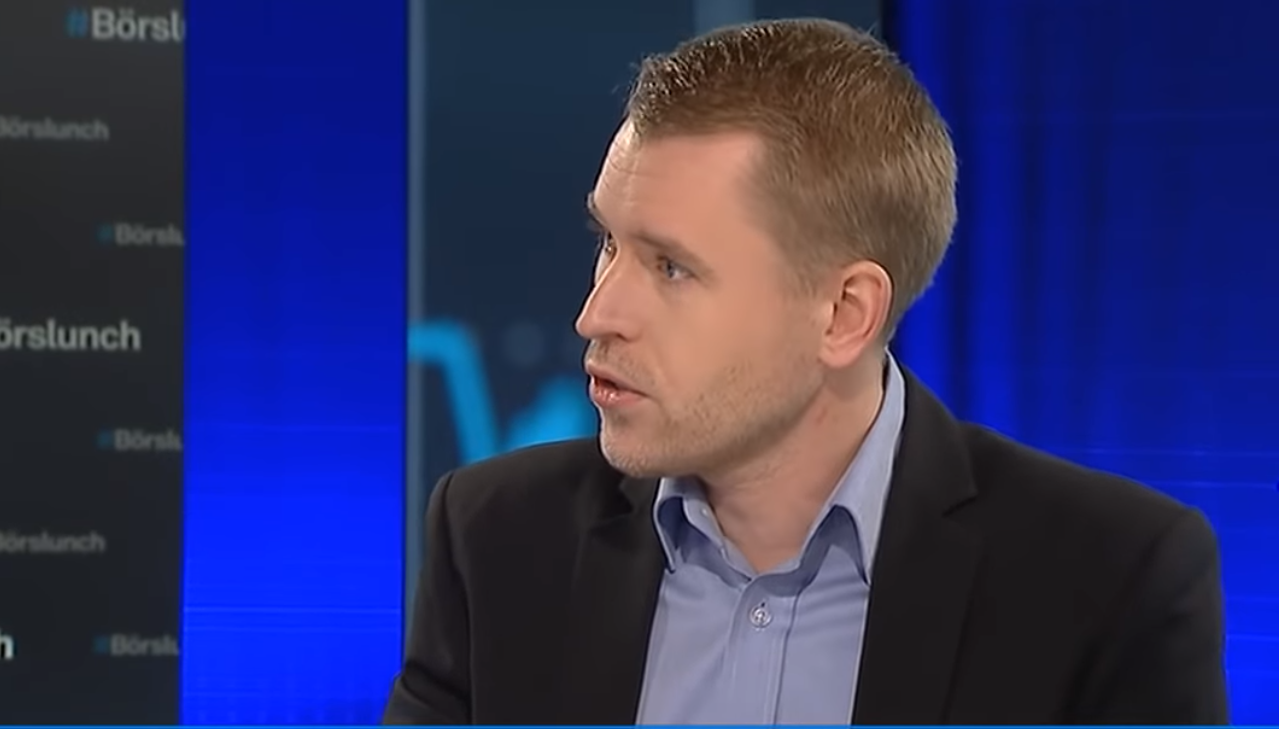
 Nyheter7 år ago
Nyheter7 år agoTeknisk analys med Martin Hallström och Nils Brobacke



